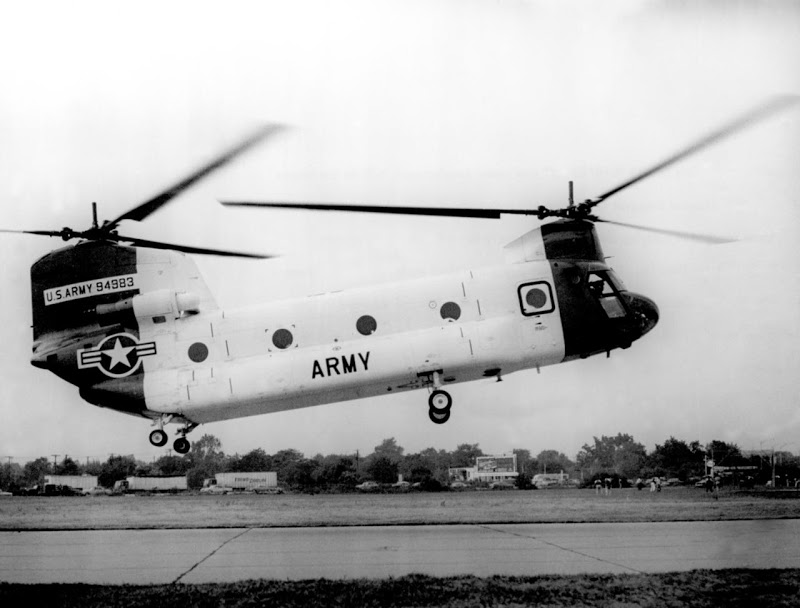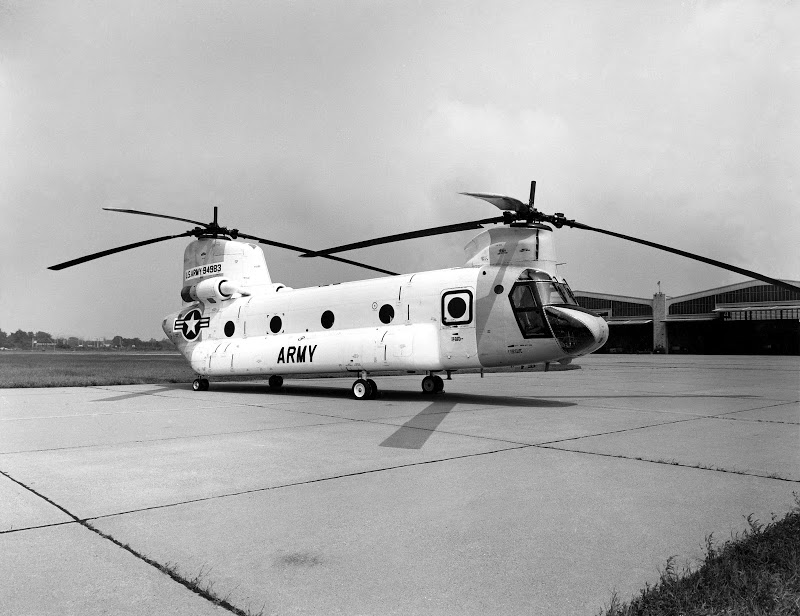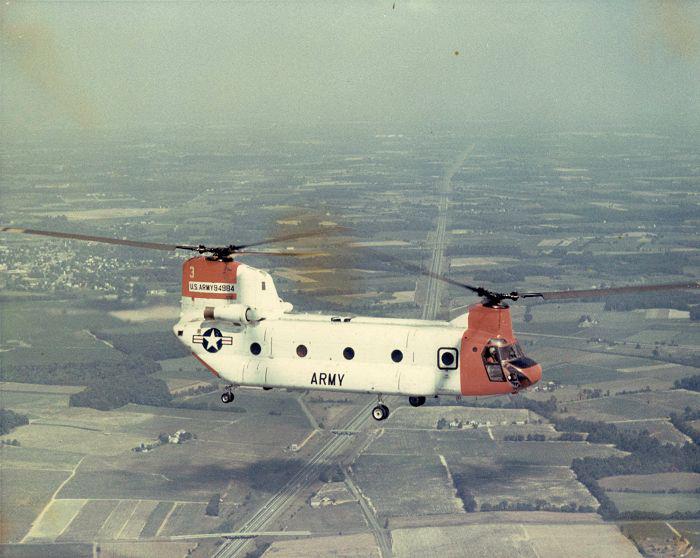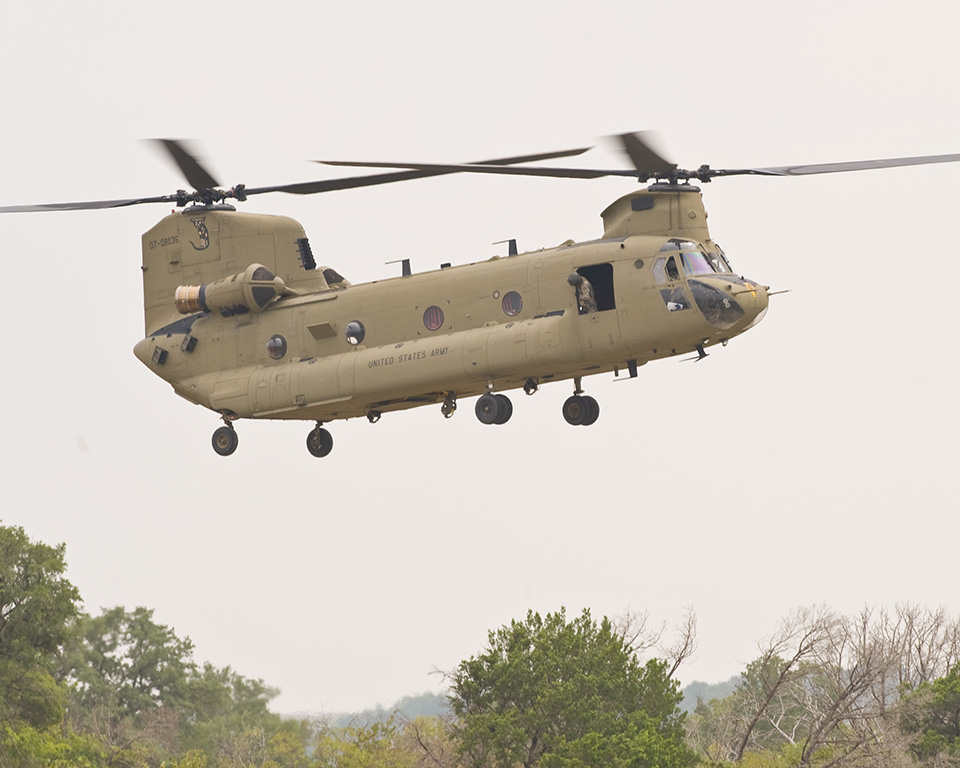

The YCH-1B fuselage was 51 feet, 0 inches (15.545 meters) long and had a maximum width of 12 feet, 5 inches (3.785 meters). The helicopter’s overall length, with rotors turning, was 98 feet, 3.25 inches (29.953 meters), and its maximum height (to the tip of the uppermost blade) was 18 feet, 6.6 inches (5.654 meters). Empty weight of the production CH-47A is approximately 25,500 pounds.
The counter-rotating fully-articulated three-bladed rotors each had a diameter of 59 feet, 1.25 inches (18.015 meters). The forward rotor turned counter-clockwise, as seen from above. (The advancing blade is on the helicopter’s right side.) The rear rotor turns the opposite direction. They rotate at 215 r.p.m.


The helicopter had a maximum speed of 153 knots (176 miles per hour/283 kilometers per hour) at Sea Level. Its hover ceiling, out of ground effect (HOGE), was 11,650 feet (3,551 meters), and in ground effect (HIGE), 14,500 feet (4,420 meters). The helicopter’s service ceiling was 18,600 feet (5,669 meters).

The Chinook remains in production as the CH-47F Block I and MH-47G, and is used by the military services of several nations. Boeing is continuing development of the Block II variant.

© 2023, Bryan R. Swopes
“The 100th Boeing CH-47F Chinook was delivered to the United States Army during August 2013.”
Should that be 1,000th ?
No, the CH-47F is the all-new variant of the CH-47 series, and production has by 2014 exceeded 300, probably a combination of new-build aircraft and converted CH-47Ds. The CH-47G is also in progress. Total production for all CH-47s since 1962, is around 1,300 (exact numbers seem to be hiding from me).
I was Honored to Pilot the CH47 Chinook’s in Vietnam as a 242nd MULESKINNER when they came to ChuChi from Fott BENNING IC 65-68
147th Hillclimber here…..
https://www.flightglobal.com/helicopters/us-army-flies-ch-47-with-ge-aviation-t408-engine/140274.article
F Models are for conventional forces, G Models to special ops aviation.
To the post Vietnam Army Chinooks were pretty much the laid back, in the rear with the gear, types. If someone made them deploy for training the crews brought washing machines and refrigerators with them.
Then came the Afghanistan mountains where they became ‘heavy assault’ helicopters. Army Aviation wouldn’t have been able to support the ground force without them. No one gives the double-headed dump trucks grief anymore.
I trained to fly helicopters beside the Boeing plant in Arnprior, Ontario. One early morning in the winter of 1974, we watched a Chinook flying circuits. Two technicians, we speculated who held large RC controls, were near the runway. As we watched the Chinook fly by us several times, we remarked that we could not see a crew in the cockpit. Yup, nobody believed us then, either.
I was on orders for CH-47 factory training as a crewchief when I applied for flight training. While I later flew helicopters I never did get the opportunity to fly a Chinook but I can see one every day without leaving this seat.